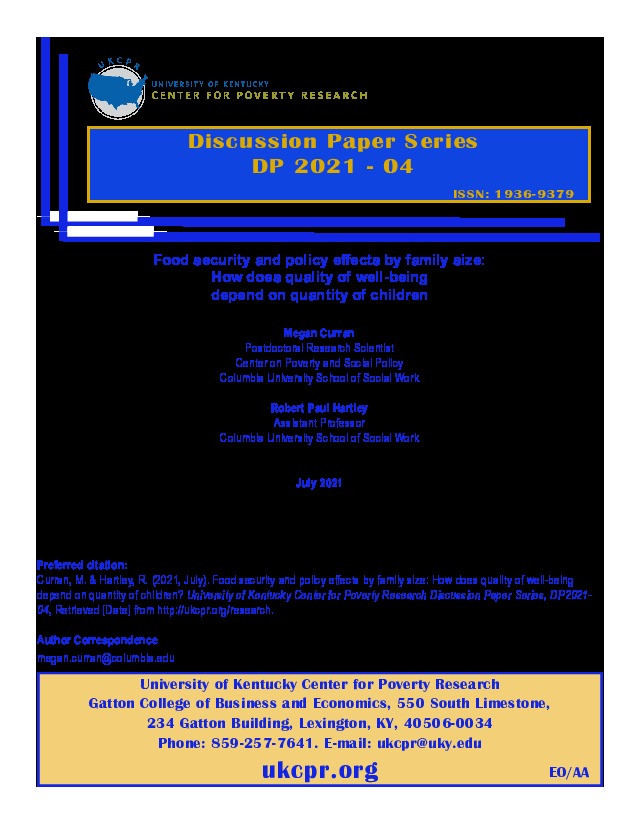We investigate the intersection of family size, food security, and the efficacy of public benefits, especially with respect to the Supplemental Nutrition Assistance Program (SNAP). Food security literature pays scant attention to the role of number of children in a household – an important dimension for understanding family resource and food assistance adequacy in the context of child well-being. We exploit longitudinal food security data within the Panel Study of Income Dynamics to explore how food security status and family resources change when families change in size, particularly with the addition of children. Gundersen et al. (2018) flagged large families as a group for consideration in any future SNAP reform, which motivates the need for evidence on the dynamics of family size, program benefits, and child food security. We focus on the subsample of SNAP recipients to address the question of how well program benefits meet the needs of families of varying sizes, as defined by a geographically price-adjusted Thrifty Food Plan, as well as how an additional family member, or child, affects the probability of being food insecure and how family size intersects with the likelihood of being extramarginal (no food spending beyond SNAP assistance), the size of the average food resource gap between spending and needs, and the adequacy of SNAP benefits in meeting food needs. Our findings provide key insight on the responsiveness of food assistance programs to changes in family composition and needs. Importantly, this study supports future research and policy design with respect to child well-being in larger families.
Research
PSIDPDF Thumbnail
